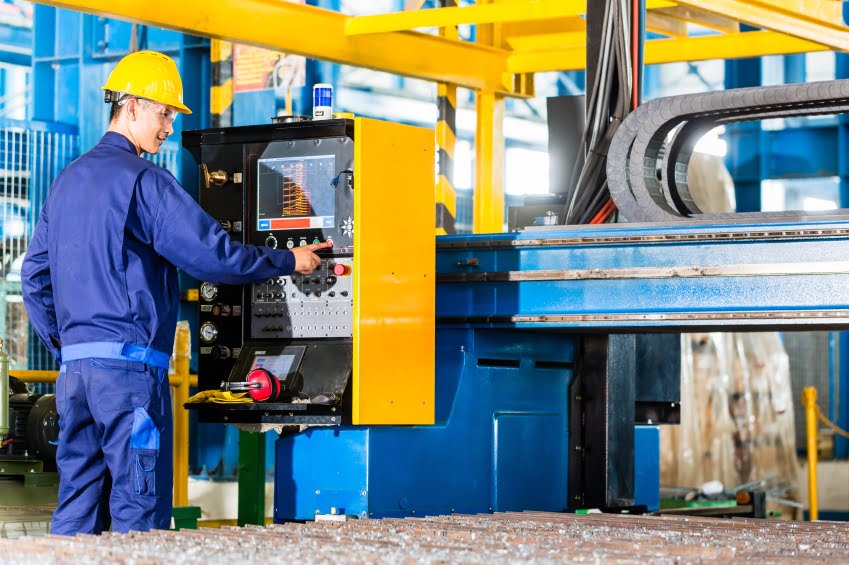How to Know How Much Cooling an Industrial Control Panel Needs

It is generally accepted that industrial control panels need some form of enclosure cooling to ensure that internal temperatures do not exceed equipment-safe working limits. In most instances, the heat load is such that the panel needs to be, at the very least, fitted with cooling fans. However, due to a desire to prevent equipment becoming contaminated by dirt and dust, closed loop solutions are often specified. Here’s how to assess the right cooling solution.
The Purpose of Enclosure Cooling
In the absence of forced cooling, the rate of heat dissipation from an enclosure is low. The internal temperature will rise until a thermal equilibrium is reached where the rate of heat generation is equal to the rate of heat dissipation through the walls and vents as a result of convection and conduction.
A review of the maximum recommended operating temperatures of control panel equipment shows that while some devices can tolerate temperatures as high as 140 °F, a significant proportion can only reliably operate at temperatures that do not exceed 104 °F.
The purpose of enclosure cooling is to increase the rate of heat removal to keep the internal enclosure temperature below 104 °F. For safety’s sake, it is recommended that industrial control temperatures should be kept at or below 95 °F.
How to Assess Industrial Control Panel Cooling Requirements
The internal temperature of an electrical enclosure is directly related to the heat load inside the enclosure, the ambient temperature and the rate of heat removal. These may be assessed as follows:
Internal heat load:
The first step is to assess the heat load of the equipment installed inside the enclosure. Itemize all pieces of equipment, and ascertain how much heat they generate. For items such as relays and contactors, the heat generated is approximately equal to their coil wattage. Similarly, the heat loss of a PLC can be derived from the power consumption of its power supply. For thermal devices like thermal magnetic breakers, the power loss can be obtained from technical documentation.
The calculation of the heat generated by variable frequency drives (VFD), rectifiers and inverters is slightly more complex because it depends on the efficiency of the device at its operating current. As an illustration, a 10 kW VFD with an efficiency of 90 percent will generate 1 kW of waste heat. The total internal heat load is the summation of the heat loss of each item of equipment.
External influences:
If a control panel is installed so that it’s exposed to the sun or to heat radiation from nearby equipment, this must be factored into the calculation. Take note of the extent of solar radiation, the color of the panel, its materials of construction and if it has insulation.
Ambient temperature:
Determine the maximum expected ambient temperature as this will represent the worst case scenario. If using climate data, don’t use the average maximum temperatures as these are always lower than the highest temperatures that are expected.
Other factors:
Although the simplest cooling solution is to ventilate the enclosure, this is not always possible because of high ambient temperatures or the presence of excessive dirt, dust, pollution or even driving rain or water sprays. If any of these conditions exist, closed loop cooling will be required. This means that the enclosure should be completely sealed and cooled using an air conditioner or air to air heat exchanger.
Calculating Enclosure Cooling Requirements
Although it is possible to calculate the enclosure cooling requirements manually, the calculation is complex, and unless appropriate factors are known and understood, significant errors are possible. A more effective method is an online enclosure temperature management (ETM) calculator that incorporates the appropriate factors.
Using the calculator is simple once all the necessary information is entered, and it’s easy to compare the three alternative cooling solutions and choose the one that’s most suitable. The cheapest solution is filtered fans. This is ideal if the environment is clean and the ambient temperature is lower than the allowed cabinet temperature. If there’s a need to seal the cabinet and use closed loop cooling an air to air heat exchanger provides similar cooling capacity to filtered fans — although like fans, the ambient temperature must be lower than the enclosure temperature. For those locations where ambient temperatures exceed the enclosure temperature, the only option is an enclosure air conditioner that, due to its refrigeration ability, can bring the internal temperature down below ambient temperature.
For additional information or technical support, contact your local sales representative or a member of our support team at Thermal Edge.

